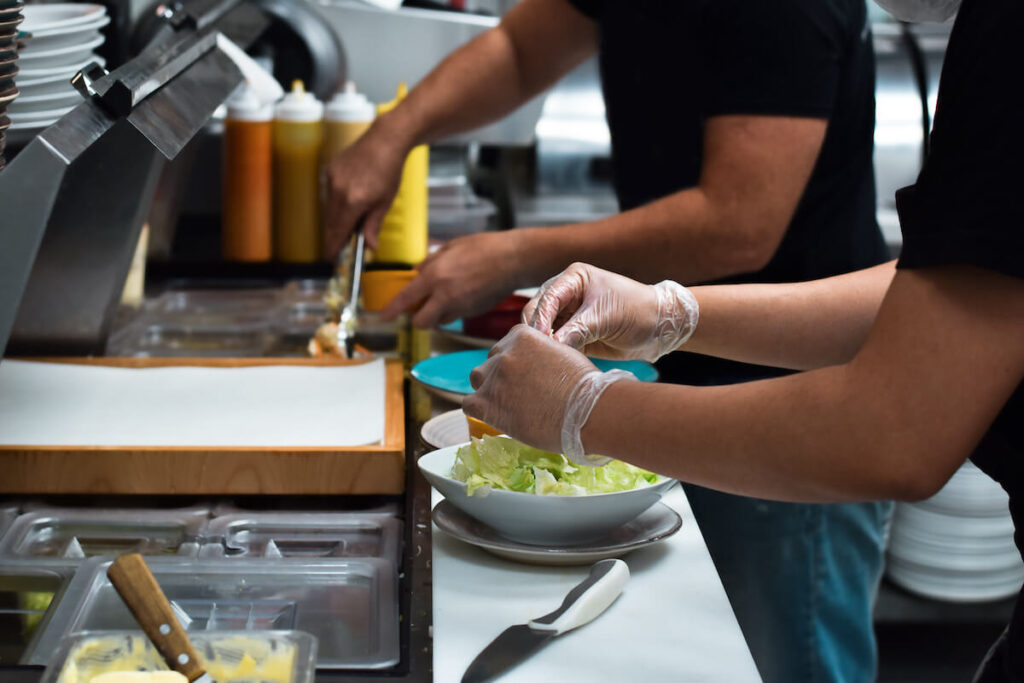Key Takeaways:
- Restaurant operators might expect installing and training voice AI ordering platforms to be a costly and complicated procedure, but it doesn’t necessarily require additional hardware or software and can take as little as 1 – 2 weeks
- Onboarding is a seamless and hands-free experience for restaurant staff, as AI providers like ConverseNow handle the heavy lifting
- Once active, voice AI-powered virtual ordering assistants dramatically improve the dining experience by increasing service speed and quality
Necessity is the mother of invention, so although the food-service sector has yet to completely bounce back from the devastating economic consequences of the COVID pandemic, this adversity has also stimulated innovative business strategies and an accelerated implementation of game-changing restaurant automation solutions. One of the most prominent technologies sweeping the restaurant industry is voice-based artificial intelligence, more commonly known as voice AI or conversational AI.
Quick-service restaurant (QSR) and full-service restaurant (FSR) operators have never been afraid to experiment with new restaurant technology, but some industry leaders might worry that the cost and complexity of installing voice AI platforms might be too much to handle, undercutting their proven value. But in reality, the onboarding process couldn’t be any faster, easier or more affordable.
The ease of integrating voice AI with your restaurant’s existing digital systems

Restaurant owners and operators don’t have to buy any special equipment or make major changes to their store just to be able to install a new voice AI technology platform. Voice AI easily integrates with a restaurant’s existing digital phone networks and point of sale (POS) systems. The onboarding process takes as little as 1 – 2 weeks if your franchise is part of a brand already working with an AI provider, as is the case with Domino’s and ConverseNow. Restaurant brands first getting started with voice AI can expect each stage of the onboarding process to take longer, allowing the AI provider to train the AI on your menu, as well as handle necessary integrations with POS systems and loyalty platforms.
Top voice AI platforms arrive ‘out of the box’ with a strong foundation of general ordering nuances, giving you a huge head start in terms of order accuracy. And while every voice AI platform requires additional training, in these cases that training focuses on your specific menu items to keep things simple. Neither restaurant operators nor their staff need to have any technical training or AI expertise, since the AI provider handles the back-end setup, and once live the orders placed through AI technology come through in the same way as online orders.
The restaurant AI onboarding and training process

Installing restaurant voice AI solutions is a quick and easy three-step process:
- Discovery and information gathering: The restaurant provides menu details and upsell preferences to the AI provider.
- System setup and AI training: The provider’s technical staff integrates the AI voice ordering platform with the restaurant’s food ordering infrastructure, and then begins training the AI technology on the restaurant’s menu.
- Go live: The trained voice AI goes live, first learning in the background while staff continue to take orders to ensure a consistent customer experience. The AI continues to learn with each new conversation, refining its algorithms to increase accuracy and performance. Eventually, the AI reaches a level where it can take orders on its own with remarkable accuracy, freeing up invaluable time for staff.
So long as restaurant management supplies the voice AI provider with some basic information around the restaurant’s menu and existing operations, the transition from traditional order taking to voice AI-powered virtual assistants will be quick and seamless.
Information gathering and the installation process
The voice AI provider’s installation team works with QSR and FSR leadership and operations teams to manage integrations and facilitate a painless transition to conversational AI. Here’s how it works:
- The AI ordering assistant learns the menu and trains itself by gathering guest order data until it’s prepared to take orders on its own
- Meanwhile, the voice AI provider integrates with the restaurant’s POS, digital phone and drive-thru systems
- Restaurant staff remain involved in the process but aren’t required to learn anything about AI, or undergo any technology training
- In most cases, the franchisee doesn’t need to install any other new software or hardware
The benefits of restaurant voice AI

Opening a quick-service restaurant franchise isn’t a task for the complacent or the easily discouraged. Consumers have many dining options to choose from, and QSRs that fail to distinguish themselves from the competition will rapidly flounder in a difficult industry where even “success” often results in razor-thin profit margins.
So what makes your restaurant worth the trip? Fair pricing, high-quality ingredients and expert food preparation only go so far, especially considering the unprecedented industry labor shortages, the logistical difficulties caused by soaring food costs and overtaxed supply chains as well as the loss of potential revenue from diners still wary of eating out in the wake of the pandemic. In such conditions, top-notch guest service and consistently delicious menu offerings might simply not be enough to stay in the black.
That said, even the most demanding circumstances have solutions–and voice AI is that solution. Voice AI—or conversational AI—is the latest and greatest restaurant technology application. Although the general public most likely associates voice AI technology with customer-service chatbots or virtual assistants like Siri and Alexa, voice AI is quickly establishing itself as an invaluable component of QSR/fast-food operations.
Voice AI as a game-changing tool for the restaurant industry
Regardless of staffing shortages or how busy your restaurant gets, QSR virtual ordering assistants never panic or rush guests, ensuring each guest receives the personalized attention they deserve. Virtual ordering assistants are excellent multitaskers, easily recording multiple real-time guest orders simultaneously across different ordering channels such as phone ordering and drive-thru, meaning that guests never have to be put on hold or suffer through excessive wait times. This dramatically increases productivity and customer retention figures.
In contrast to simplistic voice assistants or scripted chatbots, voice AI ordering assistants use machine learning algorithms to interpret and reply to speech, and constantly refine their algorithms so that each guest interaction is better than the last. Additionally, voice AI platforms use their memories of past conversations to recommend relevant order suggestions and upsells based on trends and guest order histories.
The true test of any business strategy is its direct impact on revenue, and AI technology platforms are an investment that quickly reaps dividends. Virtual ordering assistants provide guest-centric, personalized service and have an established track record of increasing average ticket sizes by up to 15% and gross margins up to 25%. Factor in the doubled productivity during peak hours, a boost to same-store sales growth, improved staff retention and reduced training expenses, and it becomes clear that voice AI might be the single most impactful tool QSR operators have at their disposal.
Optimize your restaurant’s operations with cutting-edge AI voice-ordering assistants

Installing voice AI ordering platforms might seem like an ordeal at first glance, but in reality the process can be quite simple and hands-off. Leading QSR and FSR brands like Domino’s, Blake’s Lotaburger and Anthony’s Coal Fired Pizza continue to pivot to a voice-AI based ordering format for one simple reason: it’s an most efficient and profitable business model that enhances the guest experience. Don’t let your franchise fall behind.
ConverseNow’s industry-leading voice AI virtual ordering platforms are now live in more than 1,250 stores across 43 states. Modernize your restaurant with voice AI technology and take your performance to new heights. Schedule a demo today with ConverseNow.



